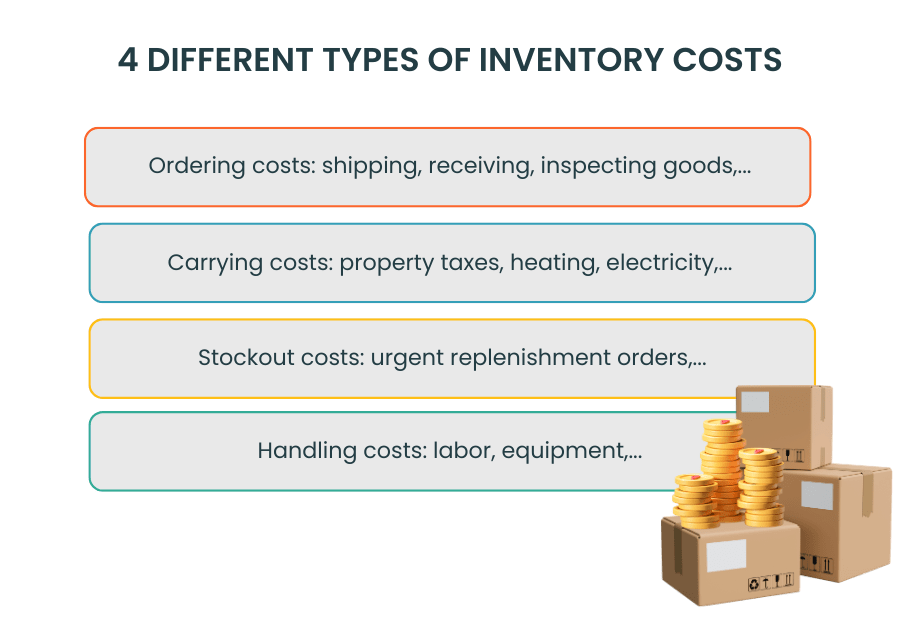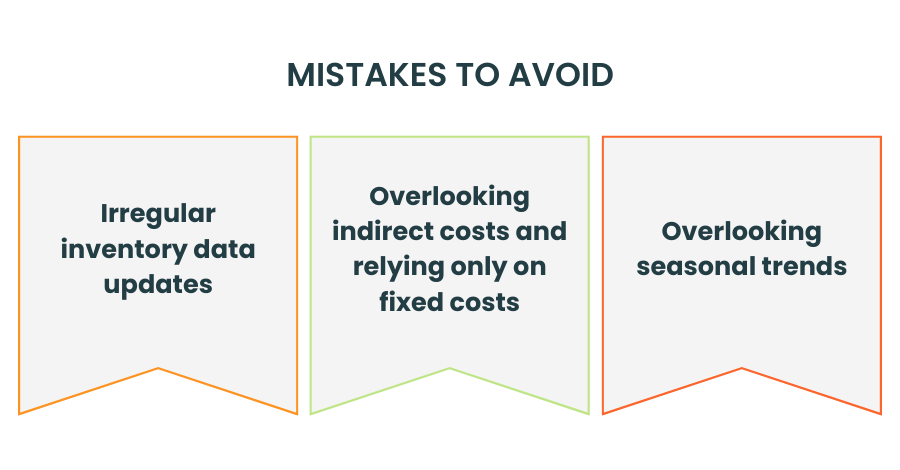

In B2B operations, inventory is far more than a stockpile of products — it’s an asset that ties up resources, takes up space, and generates expenses. These expenses, known as inventory costs, have a direct impact on your company’s profitability and cash flow.
Yet for many small and medium-sized businesses, this cost is often underestimated, leading to reduced margins or poorly timed purchasing decisions.
In this article, we’ll break down what inventory costs really include, how to calculate it, and most importantly how to optimize it to boost your competitiveness.
Inventory cost refers to the total expenses associated with storing products in your warehouse over a given period. It’s not just paying for the goods, the rent or covering the depreciation of your building — it also includes energy costs for heating or lighting, facility maintenance, labor for handling products, insurance to protect your goods, and even the depreciation some items undergo over time.
In other words, every day an item sits in storage comes at a cost. For example, if you distribute electronic components, holding onto a model long after it launches could make it obsolete. In the food industry, poor turnover can lead to waste from expired products. These are “invisible” costs… until they turn into financial losses.
Inventory costs typically fall into four main categories:

Not tracking inventory costs is like running your business with only part of the financial picture. Overstocking ties up cash that could be used for investments, equipment, or strategic purchasing opportunities. On the other hand, understocking can lead to stockouts and unhappy customers.
By measuring these costs, you gain a reliable metric for adjusting order quantities, planning restocks, and improving product turnover. This not only eliminates unnecessary expenses but also strengthens your competitive edge in a market where every bit of profit margin matters.
If you’d like to explore the topic further, our guide on inventory optimization outlines the key strategies to strike the right balance.
The most common formula uses two key elements: the average inventory value and your storage rate.
Inventory cost = Average inventory value × Storage rate
The average inventory value can be calculated as:
Average inventory = (Beginning inventory + Ending inventory) ÷ 2

Example: Let’s say you start the year with $40,000 in inventory and end with $60,000. Your average inventory would be $50,000.
If your storage rate is estimated at 20% (including rent, insurance, energy, and other expenses), your annual inventory cost would be $10,000.
This calculation can be refined — for instance, by applying different rates to different product categories using the ABC method, or by adding specific costs for certain items, such as refrigeration or special handling.
Inventory costs aren’t fixed — they depend on many factors specific to your business.
The first step to lowering this cost is to adjust your stock levels. By calculating an appropriate safety stock, you avoid filling shelves unnecessarily while still maintaining the capacity to meet demand.
Next, focus on inventory turnover. Identifying slow-moving items helps you limit purchasing on those products, clear them through promotions or targeted sales, and concentrate your resources on the most profitable SKUs. The ABC method is particularly effective for setting priorities.
Inventory valuation is another lever. By choosing the right method — FIFO, LIFO, or Weighted Average Cost (WAC) — you’ll get a more accurate view of your inventory’s value and, therefore, its real cost.
Finally, it’s essential to optimize your warehouse to minimize costs. Every unused square foot is space you’re paying for but not monetizing. By rethinking layout, flow, and storage, you can store more efficiently — and for less.
Leverage your operational data. With reliable, up-to-date information on your inventory, purchasing, and sales history, you can make informed decisions, reduce overstock, and improve overall profitability.
Some practices can distort inventory cost calculations or quietly drive up expenses without you realizing it.
One of the most common mistakes is failing to account for all costs associated with inventory. Some businesses focus only on fixed costs like rent or insurance, but overlook indirect and variable costs: electricity, maintenance, extra handling during peak periods, or specific expenses such as cold chain logistics or special packaging. The result? The true cost is underestimated, leading to inaccurate calculations and poor purchasing decisions.
Another frequent issue is not updating inventory data regularly. Incomplete or outdated inventory create a false picture of average inventory value, which can cause overordering or, conversely, unexpected stockouts.
It’s also risky to ignore seasonal fluctuations. For example, excess inventory at the end of a season can tie up cash for months. On the other hand, failing to anticipate a surge in demand during peak periods can result in costly shortages.
In short, precise and regular tracking of all inventory cost components is essential to avoid these pitfalls and make truly profitable purchasing decisions.

With its intuitive interface, Erplain lets you track inventory levels and values in real time, giving you a clear picture of changes over time. This visibility makes it easy to calculate average inventory and estimate inventory costs with precision.
By unifying purchasing, sales tracking, and restocking planning, Erplain helps you avoid both overstocking and stockouts. The result? Less cash tied up, fewer losses from obsolescence, and better product turnover.
Erplain works for any sector — whether you manage seasonal goods, perishable items, or high-value SKUs. For businesses with specific requirements (batches, expiration dates), Erplain offers reliable product traceability.
By centralizing your inventory data, Erplain saves you time and reduces errors from manual tracking, so you can focus more resources on growing your business and serving your customers.
